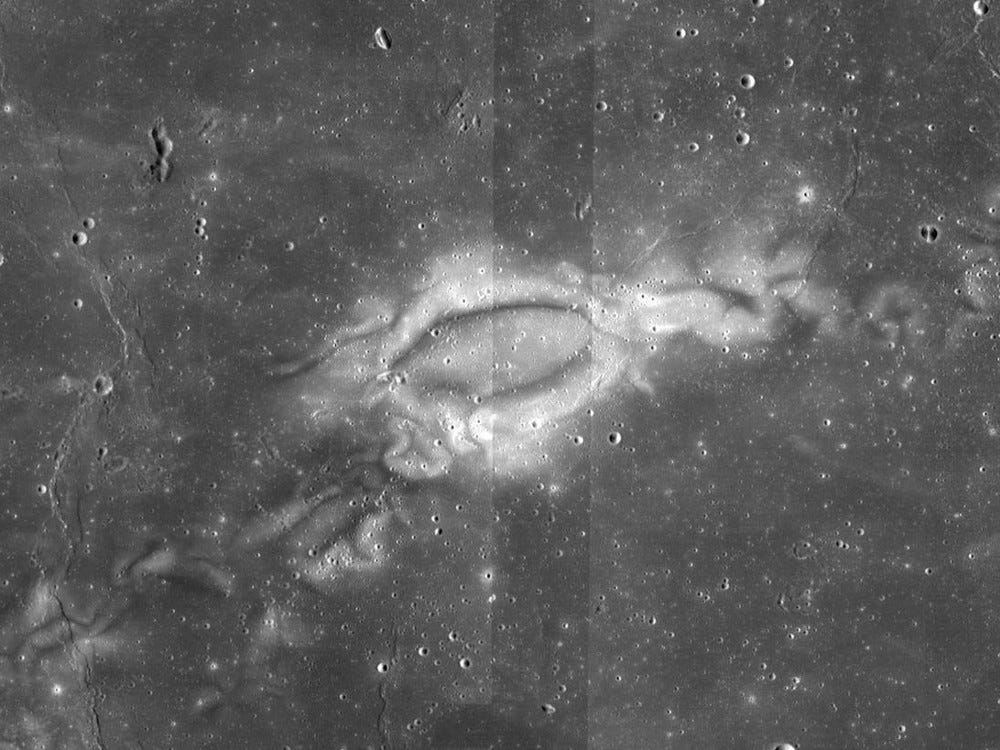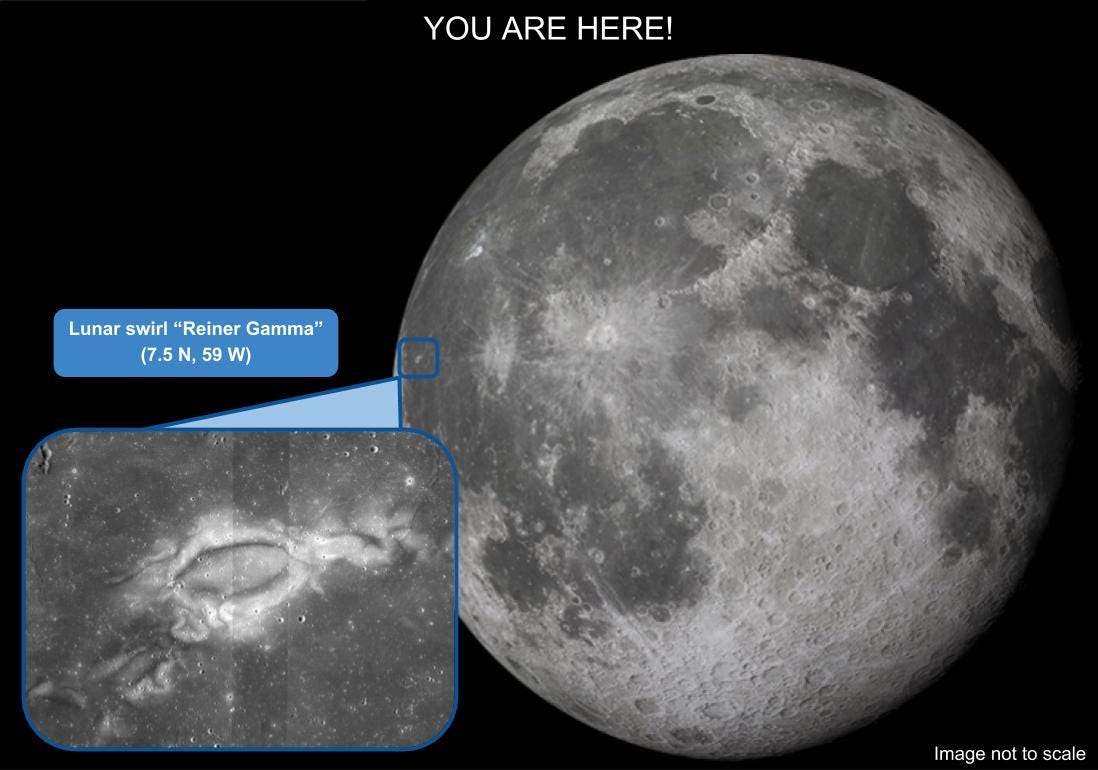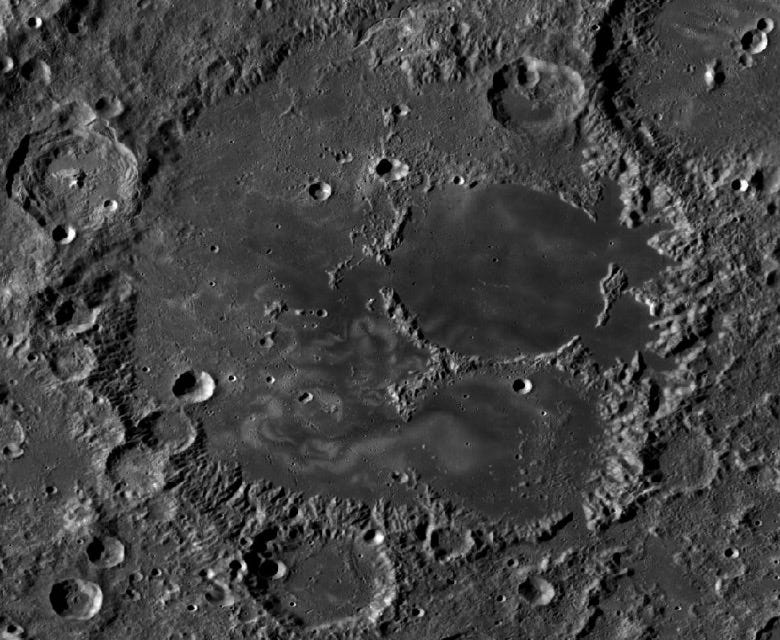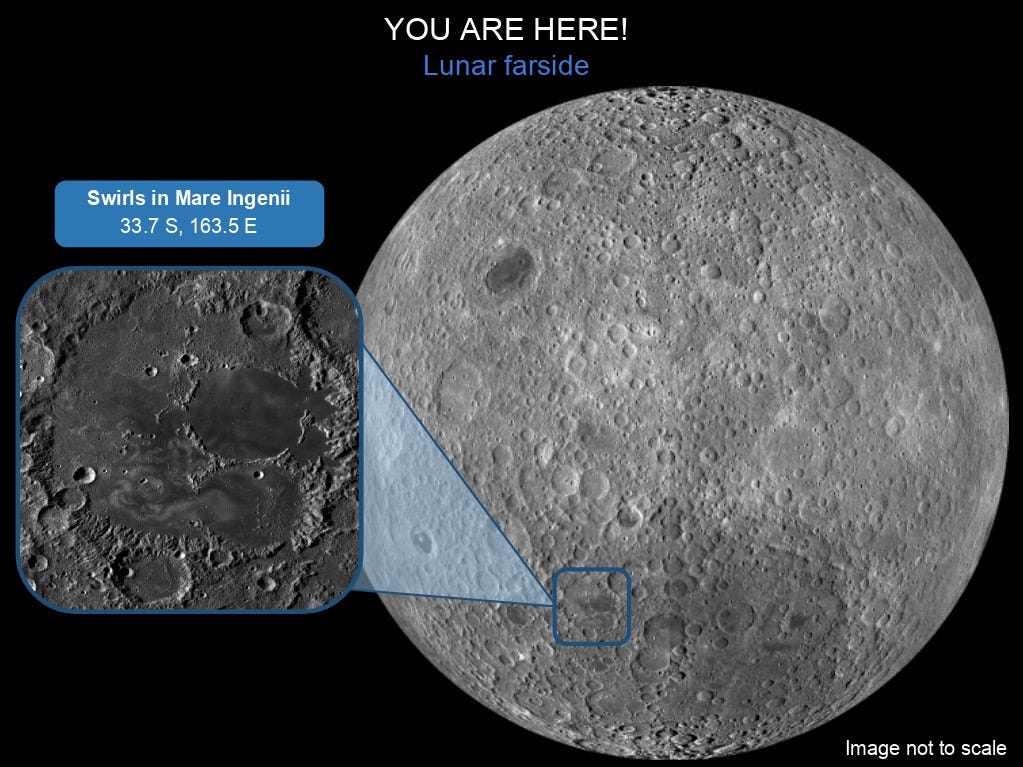What are swirls on the Moon?
The bright and magnetic features whose origin remain a mystery.
The Moon is host to a type of bright features quite glaringly called swirls. Seen below is the lunar swirl of Reiner Gamma.

Reiner Gamma is large enough to be faintly visible on the Moon with the naked eye under favorable conditions.

The Moon lost its global magnetic field well over 3 billion years ago but it does have local areas that are still magnetic. Interestingly, all swirls on the Moon are associated with a local magnetic field. These fields protect parts of the swirl’s surface from being degraded by the solar wind and micrometeorites, making them brighter than their surroundings. On the other hand, the magnetic field lines accelerate solar radiation weathering on regions just besides them. These two mechanisms together are what give all swirls their distinctive bright and dark look.
Here are a plethora of lunar swirls in the Ingenii crater.

Mare Ingenii is a case of scattered, magnetized swarm of lunar swirls spread across more than 100 kilometers. It’s one of the key scientific places to visit on the Moon’s farside. NASA had chosen Ingenii as a landing site for the now-cancelled Constellation Program.

How do such swirls form in the first place though? We don’t know.
Scientists have some interesting ideas on the matter but ultimately we need to precisely measure the local magnetic field strength of regions within the swirl by sending a surface mission. We also need to measure exactly how radiation particles from the solar wind interact with the swirl's magnetic field, and how it affects and shapes the local environment. A landing mission to Reiner Gamma or other swirls would be key to understanding these intriguing features and their origin. In November 2021, NASA funded a commercial Moon mission as part of their CLPS program to do exactly that.
→ Browse the Blog | About | Donate ♡
